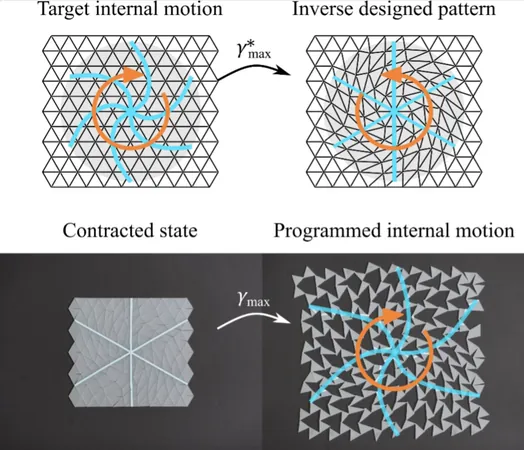
NASA's Bold Steps to Combat Biological Contamination on Mars Missions
2025-05-02
Author: John Tan
Preparing for Humanity's Leap to Mars
As mankind gears up for its historic mission to Mars, NASA is facing a compelling responsibility under the Outer Space Treaty of 1967. This pivotal agreement demands that we shield the enigmatic red planet from harmful contamination while simultaneously safeguarding Earth from any hazardous materials we might return from Mars.
International Collaborations Shaping Planetary Protection
In recent years, NASA has teamed up with esteemed organizations like the Committee on Space Research (COSPAR), the European Space Agency (ESA), and the Japanese Aerospace Exploration Agency (JAXA). Together, they have hosted various workshops aimed at pinpointing gaps in our knowledge regarding the prevention of microbial contamination from Earth during crewed missions and understanding the risks associated with a potential Martian biosphere.
Towards Defining New Standards for Mars Missions
Current international guidelines on planetary protection (COSPAR, 2024) provide only a broad framework for crewed missions. This highlights the urgent need for ongoing dialogue to pinpoint exact safety protocols. In this endeavor, NASA is exploring the realm of biological contamination to assess the types and quantities of earthly microorganisms that could accompany a crew to Mars.
Understanding Contamination Thresholds
This exploratory phase is crucial—it paves the way for effective management of any potential contaminants that might threaten Martian life forms, should they exist. Researchers are focused on establishing a shared framework that sets clear contamination thresholds, answering the critical question: 'How much contamination is acceptable?' Specifically, their studies estimate the biological contamination levels expected during a 30-sol stay with a two-member crew on the Martian surface.
Identifying and Mitigating Contamination Sources
The study aims to pinpoint sources of biological contamination and quantify their potential impact on Mars. It also seeks ways to minimize or mitigate these risks effectively.
Innovative Mission Designs on the Horizon
The mission architecture under consideration involves a crew of four: two astronauts orbiting Mars while the other two descend to its surface using a futuristic 3 x 25-ton lander. Amazingly, this crew will reside in a pressurized rover rather than a fixed habitat during their 30-sol surface stint. It's critical to mention that NASA has yet to finalize an official mission design, and updates are already in the works.
Looking Ahead: The Future of Human Exploration on Mars
As NASA forges ahead in this groundbreaking frontier, the insights gained from these assessments are indispensable for a successful and safe human exploration of Mars. The stakes have never been higher, and with every step, we inch closer to unlocking the mysteries of our neighboring planet.



 Brasil (PT)
Brasil (PT)
 Canada (EN)
Canada (EN)
 Chile (ES)
Chile (ES)
 Česko (CS)
Česko (CS)
 대한민국 (KO)
대한민국 (KO)
 España (ES)
España (ES)
 France (FR)
France (FR)
 Hong Kong (EN)
Hong Kong (EN)
 Italia (IT)
Italia (IT)
 日本 (JA)
日本 (JA)
 Magyarország (HU)
Magyarország (HU)
 Norge (NO)
Norge (NO)
 Polska (PL)
Polska (PL)
 Schweiz (DE)
Schweiz (DE)
 Singapore (EN)
Singapore (EN)
 Sverige (SV)
Sverige (SV)
 Suomi (FI)
Suomi (FI)
 Türkiye (TR)
Türkiye (TR)
 الإمارات العربية المتحدة (AR)
الإمارات العربية المتحدة (AR)